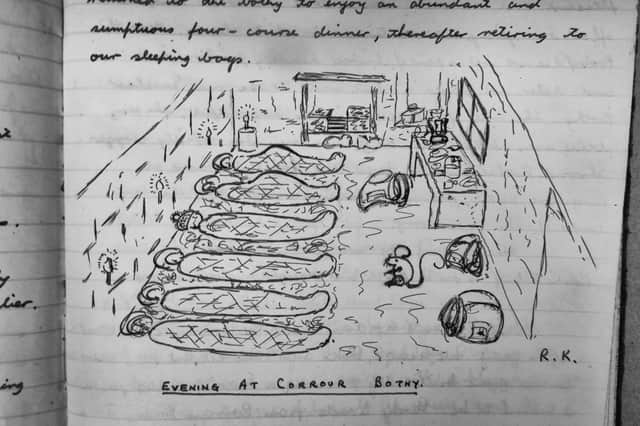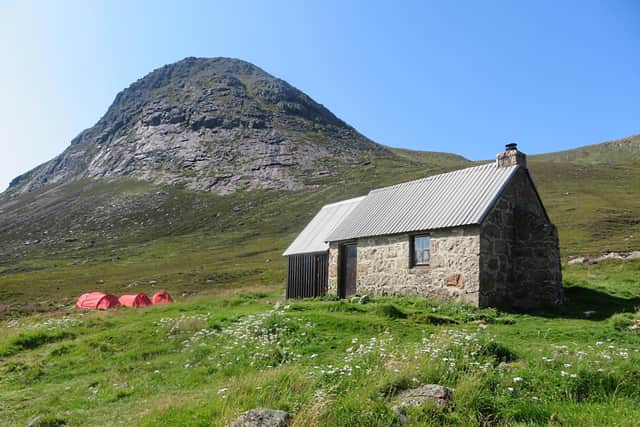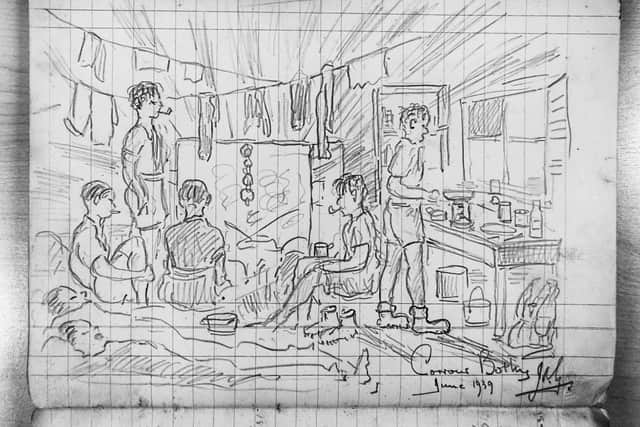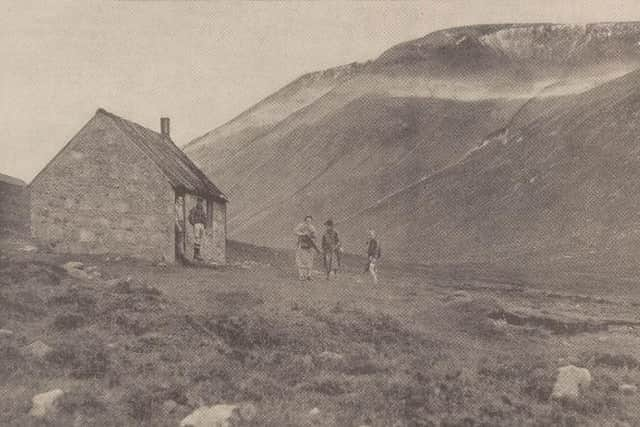The history of Scottish hill-going, as told by a bothy’s visitors’ books


Usually, only our grandest buildings get books devoted to them: castles, cathedrals, stately piles and the like. But while such structures may be architecturally impressive, we all know that the real stuff of human history – everyday human history, that is – mostly happens elsewhere.
The acclaimed outdoors writer Ralph Storer understands this better than most, and his new book, Corrour Bothy: A Refuge in the Wilderness (Luath, £10.99), shows just how much there is to learn from studying the social history of more down-home structures.
Advertisement
Hide AdAdvertisement
Hide AdSituated in the Lairig Ghru, the imposing mountain pass that cuts through the heart of the Cairngorms from north to south, linking Speyside to Deeside, the titular bothy was built in 1877. Originally it provided a base for deer watchers, who were employed to keep an eye on the herds during the stalking season, but in 1920 it was abandoned by the landowner, Mar Lodge Estates, and before long hillwalkers had begun using it as a shelter. In 1928, the bothy acquired its first visitors’ book, and the messages scrawled in this volume and its many successors provide a fascinating and multi-faceted history of mountain recreation in the Highlands.


Storer provides a thorough introduction to the bothy and its immediate surroundings, but for the most part he lets the visitors’ book entries tell their own stories. The book is divided into three parts. In the first, Setting the Scene, Storer gives some background on bothies in general and Corrour in particular, along with details of the various possible approaches to it from both the Speyside and Deeside ends of the Lairig Ghru. In the second part, Corrour Through Time, he writes a very readable sort of hybrid history of the bothy, stitching together quotations from the visitors’ books with only the briefest of authorial interventions. Finally, in the third part, Corrour Through Experience, he lets the visitors’ book entries speak for themselves almost exclusively, although the entries are grouped under themed headings like “Climbing Capers” and “It Never Rains but it Pours.”
One anonymous entry in Volume 18 of the visitors’ book, dating from 1971, reads “Kindly do not remove or use as firelighters – this could be an historic document some day”; whoever wrote that was certainly far-sighted, because the books really are a treasure trove.
Climbers will be delighted to see entries from well-kent names, sometimes recording first ascents. For example, on 30 December 1950, DG [Gordon] Leslie and TW [Tom] Patey wrote "Called in here 11.40 en route for a snow climb up the Devil’s Point. Made a successful attempt on the Douglas Gully of Lochnagar under excellent snow conditions on Friday 28th – First Winter Ascent.” This off-hand comment doesn’t really do justice to a climb culminating in a section which involved tunnelling through a cornice projecting 25 feet from the side of the mountain. Directly underneath, somebody has emphasised the magnitude of the feat by writing: “NICE WORK, TOM! BLOODY GOOD!”
Similarly, there are entries that will fascinate skiers, not least a short-but-evocative one made on 4 April 1950 by a 19-year-old Adam Watson: “Storm has subsided. Calm and frosty. Setting off to ski over tops to Speyside.” Later, Watson would become a celebrated naturalist and environmentalist, known as “Mr Cairngorms” because of his encyclopedic knowledge of his home hills; when he wrote those words, though, he was just a 19-year-old ski nut heading off to get his fix.


Some of the most poignant contributions were made during the Second World War. On 21 August 1940, C Drinkwater wrote “This visit carries out the promise to come again which I made when I came here in June 1939, although when I wrote it then I never expected my next visit would be during a leave from the army. However, I am still hoping to be back here for several days when the war is over.” As Storer points out, it is a great pity that the visitors’ books from 1943-1948 are missing – who knows how many of those who swore to return in the early years of the war survived to write later, jubilant entries after VE Day?
Storer’s association with Corrour Bothy and with its visitors’ books has been a long one. As a student at the University of Dundee in the 1960s, he became a member of the university hillwalking club, the Rucksack Club, and in his second year became editor of the club journal. It was then that he first discovered the visitors’ books, which the Rucksack Club had archived from 1928 to 1960. Since then, as various different organisations have taken it in turns to look after the books, the record has become patchy. The volumes from 1985-96, for example, are missing, as are those from 1998 to 2015. Storer has done the outdoors community a great service by pulling together these edited highlights of the existing books; perhaps if the missing volumes are located he could produce an expanded second edition.
To order a copy of Corrour Bothy, visit www.luath.co.uk
A message from the Editor:


Thank you for reading this article. We're more reliant on your support than ever as the shift in consumer habits brought about by coronavirus impacts our advertisers.
If you haven't already, please consider supporting our trusted, fact-checked journalism by taking out a digital subscription at https://www.scotsman.com/subscriptions
Joy Yates, Editorial Director